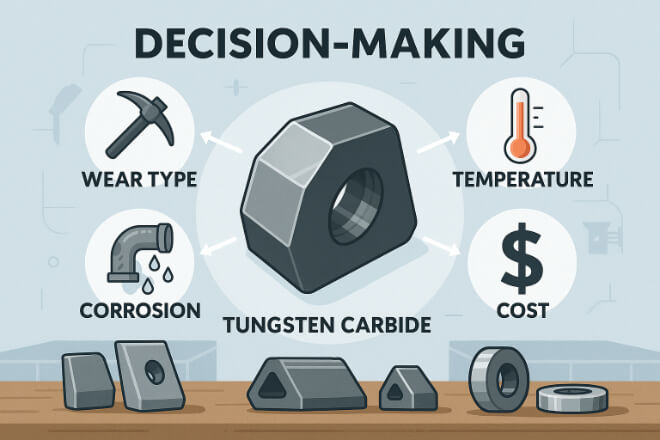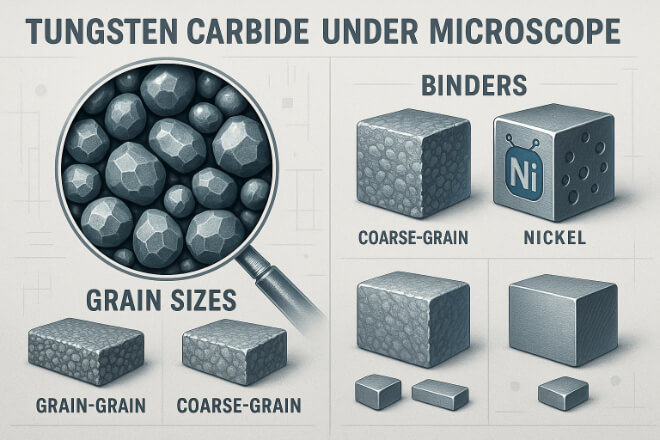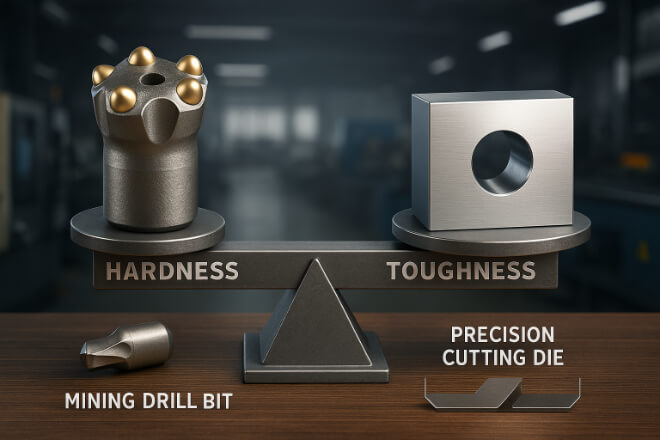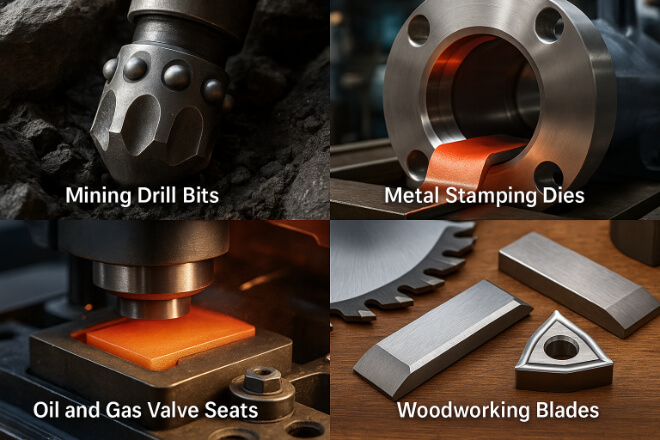常见碳化钨等级及其用途
| 等级类型 | 主要特性 | 最适合 |
|---|---|---|
| 细晶粒碳化物 | 硬度高,耐磨性优良 | 精密切削刀具、模具、耐磨喷嘴 |
| 粗晶粒碳化物 | 韧性更高,抗冲击性更强 | 采矿工具、钻头、重型磨损部件 |
| 亚微米碳化物 | 极高的硬度,光滑的表面 | 医疗工具、精加工、精密零件 |
| 镍结硬质合金 | 耐腐蚀 | 石油和天然气阀门、化工泵、船舶应用 |
选择等级时要考虑的因素

选择碳化钨等级时,决策者应该考虑:
磨损类型——是磨料磨损、冲击磨损还是混合磨损?
工作温度——一些粘合剂在高温下表现更好。
腐蚀风险——如果部件处于化学或潮湿环境中,镍结合等级会有所帮助。
成本与性能——更高等级的成本可能更高,但使用寿命更长。
给决策者的建议

与可以为您的特定工作测试样品的供应商合作。
跟踪现有工具的磨损模式,以了解首先出现故障的地方。
避免过度指定——更昂贵的等级可能并不总能提高性能。
结论
选择合适的碳化钨等级需要平衡硬度、韧性和环境需求。
通过了解材质的工作原理,决策者可以延长刀具寿命、减少停机时间并提高效率。正确的选择可以节省成本,并提高长期可靠性。
如果您想了解任何公司的更多详细信息,请随时 联系我们。



